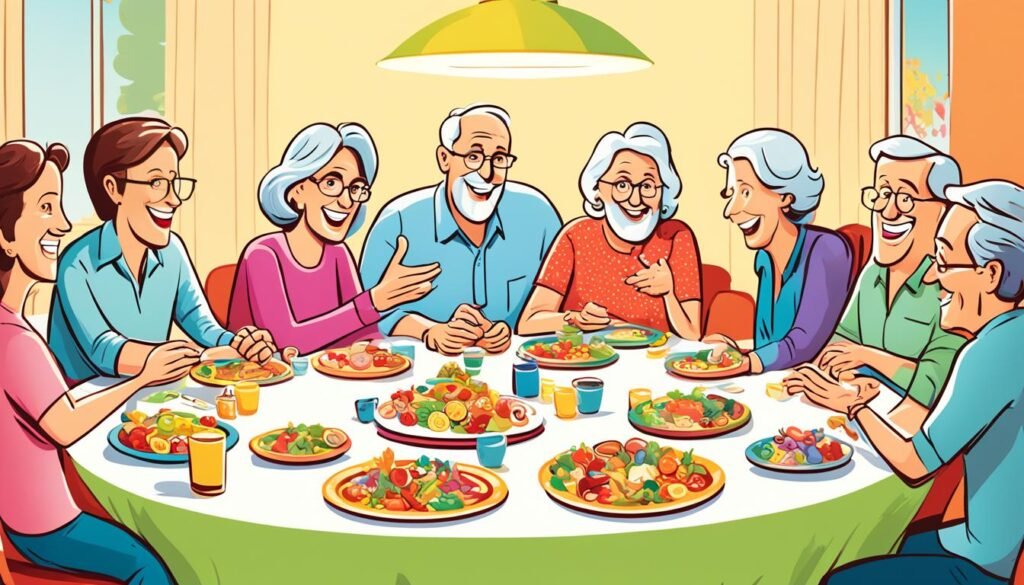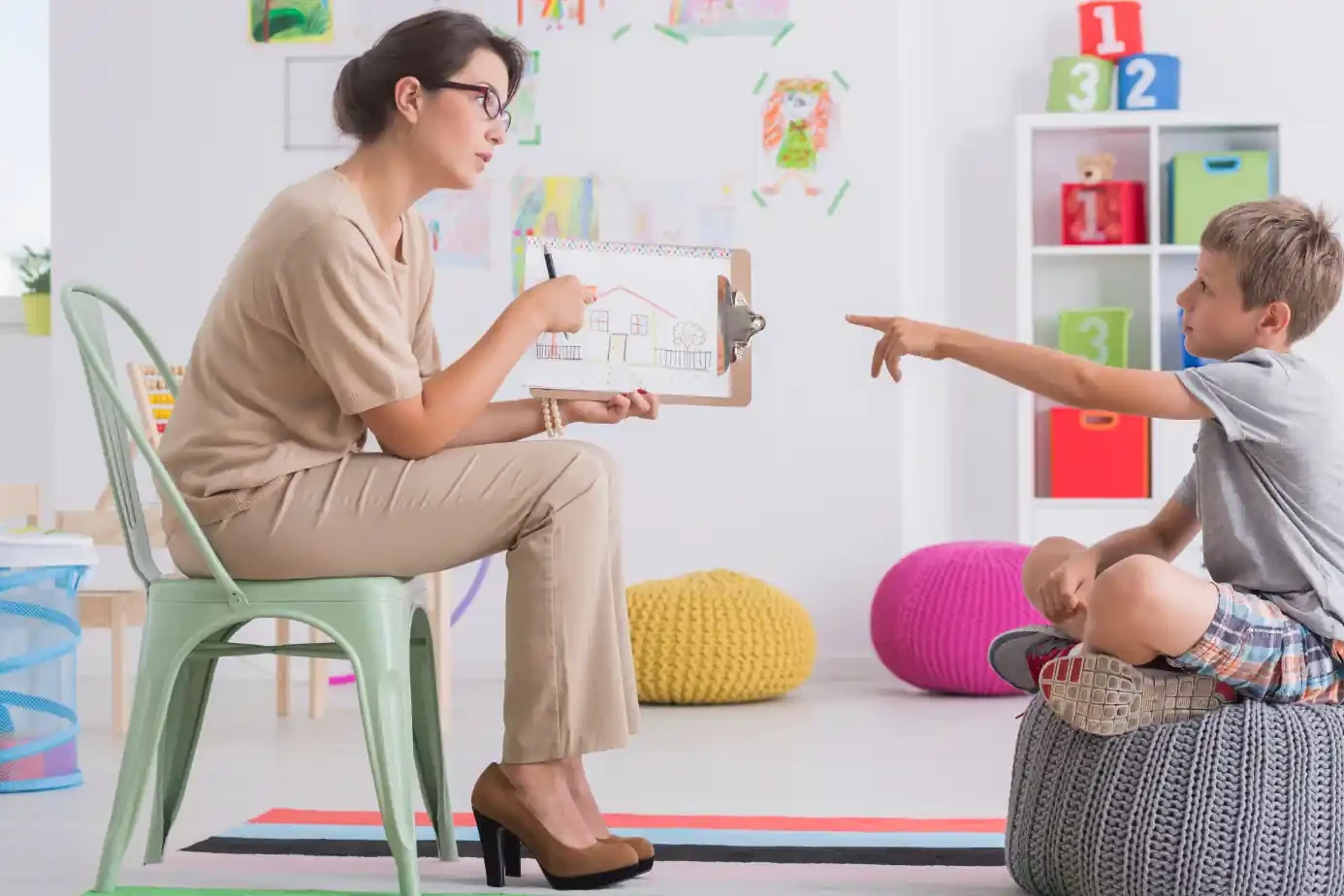Family therapy is a way to help all members of a family talk and work together better. It can include the whole family or even extended family members. The main aim is to make communication better, change old patterns, and solve problems at home.
This type of therapy is great for families facing many challenges. These can be mental health issues, behavioral problems, trauma, grief, or conflicts between family members. Family therapy can make the home life better for everyone.
Learning about family therapy techniques can help you improve your family’s communication and solve conflicts. This article will cover different types of family therapy and share effective methods to make your family stronger.
Table of Contents
ToggleWhat is Family Therapy?
Family therapy is a special kind of counseling. It aims to make family relationships better. It looks at how each person’s feelings and actions affect the whole family.
Definition and Goals of Family Therapy
The main idea of family therapy is to improve how people talk to each other. It also helps change harmful patterns and make the family stronger. The main goals of family therapy are to get better communication, change unhealthy roles, solve family issues, and make the home environment better.
Family therapy can include different family members like parents, kids, grandparents, aunts, uncles, friends, and caregivers. The family therapy overview uses various techniques suited to each family’s needs.
By focusing on the family, therapy helps everyone understand their place in the family better. It teaches ways to deal with challenges more effectively. The main aim is to create a supportive family environment where everyone can do well.
Common Types of Family Therapy
Family therapy has many approaches, each suited for different family needs. You can choose from structural, Bowenian, strategic, and systemic family therapy. Each type has its own way of helping families work through problems. Knowing the differences can help you find the best therapy for your family.
Structural Family Therapy
Structural family therapy looks at how family members relate to each other. It helps families find new ways to solve problems. This leads to stronger family bonds and healthier ways of interacting.
Bowenian Family Therapy
Bowenian family therapy is all about finding a balance between being together and being your own person. It helps family members keep their own identities while strengthening their connection.
Strategic Family Therapy
Strategic family therapy is short-term and aims for quick changes. It spots and stops negative patterns. Then, it helps families adopt better ways of relating to each other.
Systemic Family Therapy
Systemic family therapy looks at how family issues fit into the bigger picture. It considers things like culture, religion, and economic status. This method shows how the family’s actions are shaped by their environment.
Learning about the different types of family therapy helps families find the right fit. This can lead to lasting positive changes for everyone.
Family therapy techniques for Better Communication
Good communication is key to strong family bonds. Family therapy offers many ways to make talking better within your family. By using these family therapy techniques for communication, you can understand each other better, solve problems, and get closer.
Active listening is a big help. It means repeating back what someone says to make sure you get it right. It also means trying to see things from their point of view. Positive reinforcement is another good method. Here, you reward and praise the good ways people talk to each other.
Soft start-ups make talking easier. Use “I” statements to share your feelings instead of blaming. And, mindful body language shows you’re really listening and caring.
Using these strategies can make your family talk better and connect more deeply.

Family Therapy Activities for Anxiety
Family therapy is a great way to tackle anxiety together. It includes activities like thought records and exposure therapy. These can really help families face their challenges.
Thought Records
Thought records help family members spot and fight negative thoughts. They write down their thoughts and then question them. This helps them switch to more realistic thoughts, easing anxiety and boosting happiness.
Exposure Therapy
Exposure therapy is another key activity. It slowly introduces the anxious person to their fears in a safe space. With family support, they learn to face their fears and handle anxiety better.
Doing these family therapy activities for anxiety helps families understand how thoughts and actions affect feelings. Together, they can beat anxiety and strengthen their bonds.
Family Therapy Interventions for Depression
Depression can deeply affect family life and relationships. Luckily, family therapy, like Cognitive-Behavioral Therapy (CBT), can help. CBT teaches family members to change negative thought patterns. This leads to better feelings and actions.
Through family therapy, members can support each other and find healthy ways to deal with depression. This teamwork helps families find the depression’s root causes. Together, they can work towards healing and feeling better.
Cognitive-Behavioral Therapy for Families
Cognitive-behavioral therapy for families helps members spot and fight negative thoughts that make them feel depressed. By doing this, families can swap these bad thoughts for better ones. This change can improve their mood and actions.
The main ideas of CBT for families are:
- Identifying and changing bad thought patterns
- Learning better ways to talk and solve problems
- Making changes in behavior to help mental health
- Building understanding and support among family members
With a family therapist’s help, families can better understand depression. They can also learn ways to lessen its effect on their relationships and everyday life.
Family Therapy Strategies for Addiction
Addiction deeply affects the whole family. Family therapy strategies for addressing addiction help improve communication and support recovery. Therapists use various techniques to involve the whole family in treatment and help everyone heal.
Behavioral activation is a key method. It gets family members doing positive activities together. This strengthens family bonds and helps the person in recovery. Relapse prevention planning is also important. Families work together to spot triggers and find ways to avoid relapses.
Family-based interventions are vital too. They help improve family communication and solve conflicts. This makes the family a strong support system for the person recovering. By getting the whole family involved, these therapies boost long-term success and lower relapse risk.
The main aim of these family therapy strategies for addiction is to make families key players in recovery. By building stronger relationships and improving communication, family therapy for addiction is key to helping individuals stay on the path to recovery and well-being.
Family Therapy Exercises for Trauma
Families who have faced trauma can greatly benefit from special family therapy exercises. These exercises help with healing and building resilience. Techniques like narrative therapy let family members share their stories and find new meanings.
Practices such as guided imagery and mindfulness also help manage emotions. They create a safer feeling in the family.
These exercises make family members work together. They build empathy and teach healthy ways to cope with trauma. By doing these activities, families can better understand each other and grow together.
Narrative Therapy
Narrative therapy is a key part of family therapy for trauma. It gives a safe space for sharing stories. This helps people see their experiences in a new light.
Through storytelling, families gain a deeper connection and empathy for each other.
Guided Imagery and Mindfulness
- Guided imagery helps family members picture and feel safe, calm, and secure. These feelings are often lost after trauma.
- Mindfulness, like deep breathing and being aware of senses, helps families stay in the moment. It helps with managing emotions and feeling more grounded.
Using these exercises, families can work through their shared trauma together. They can build resilience and move towards healing and growth.
Family Therapy Approaches for Anger Management
Anger can really strain family relationships and communication. Luckily, family therapy has ways to help manage anger. One method is the Bowenian family therapy technique.
Bowenian Techniques for Anger
Bowenian family therapy aims to make family members more aware of their feelings and emotions. It helps them control their reactions to anger. Therapists use family tree diagrams, or genograms, to look at patterns and feelings in the family.
This approach helps families understand their emotional system better. It makes family members take charge of their feelings and actions. This leads to better ways of talking and solving conflicts, helping to deal with anger in a positive way.
- Explore intergenerational patterns using genograms
- Increase emotional self-awareness and self-regulation
- Develop greater responsibility for one’s own emotions and actions
- Improve communication and conflict resolution skills
Bowenian family therapy tackles anger at its core. It empowers families to build stronger bonds. By using these methods, family therapy aids in overcoming anger issues and promoting unity.
Family therapy techniques for Grief
When families lose a loved one, family therapy is key. Therapists use various techniques to help families express feelings, talk openly, and support each other. This is crucial during tough times.
Creating a “feel-good file” is a strong exercise. Family members write down positive memories and messages for the deceased. This helps comfort them and keeps the family’s bond strong.
Open talks about grief are also helpful. Therapists make a safe space for sharing personal stories and feelings. This helps families understand and support each other better.
These techniques help families deal with loss together. By focusing on talking, sharing feelings, and understanding each other, families can heal. Grief counseling makes this healing journey smoother.

Conclusion
Family therapy is a strong tool for families facing many challenges. It helps improve communication, solve conflicts, and make relationships stronger. This approach gives families the support and guidance they need to do well.
It can help with mental health issues, addiction, or grief. Family therapy’s insights and techniques help you and your loved ones build stronger, more united bonds.
Family therapy is versatile and effective for dealing with family dynamics. It sees how everyone in the family is connected and works on solving problems together. This way, family therapists help you and your family get through tough times, heal from past hurts, and learn to create a supportive home.
Remember, family therapy is a key tool for making positive changes and strengthening important relationships. It’s a caring and team-based way to tackle your family’s specific needs. Take what works for your family and trust in the power of working together towards a better future.
FAQ
What is family therapy?
Family therapy is a way to help families talk better and solve problems together. It includes all family members, sometimes even the extended family. The goal is to make communication better, change old patterns, and make the family stronger.
What are the common types of family therapy?
There are several types of family therapy. These include structural, Bowenian, strategic, and systemic therapy. Each type has its own way of helping families.
How can family therapy techniques improve communication?
Family therapy helps families talk better by teaching skills like active listening and positive feedback. It also focuses on body language and starting conversations in a good way.
How can family therapy address anxiety within the family?
To tackle anxiety, family therapy uses activities like keeping thought records and exposure therapy. These help family members face their fears safely and support each other.
How can family therapy help with depression?
For depression, family therapy uses Cognitive-Behavioral Therapy (CBT). This helps family members change negative thoughts to positive ones. It leads to better feelings and actions.
How can family therapy address addiction?
Family therapy for addiction works on improving how family members talk to each other. It helps change unhealthy patterns and supports the person recovering from addiction. Therapists use various techniques like planning for relapse prevention.
How can family therapy help with trauma?
To heal from trauma, family therapy offers activities like sharing stories and guided imagery. These help families find strength and feel safe together.
How can family therapy address anger management?
Family therapy for anger uses techniques like Bowenian methods. These help family members become more independent and control their emotions better. Therapists also help them understand and change old patterns.
How can family therapy help with grief?
For grief, family therapy includes making a “feel-good file” with positive memories and talking openly about feelings. These activities help families support each other in their grief.
Source Links
About The Author

This article is medically reviewed by Dr. Chandril Chugh, Board-Certified Neurologist, providing expert insights and reliable health information.
Dr. Chandril Chugh is a U.S.-trained neurologist with over a decade of experience. Known for his compassionate care, he specializes in treating neurological conditions such as migraines, epilepsy, and Parkinson’s disease. Dr. Chugh is highly regarded for his patient-centered approach and dedication to providing personalized care.
→ Book a consultation to discover which remedies suit your needs best.




